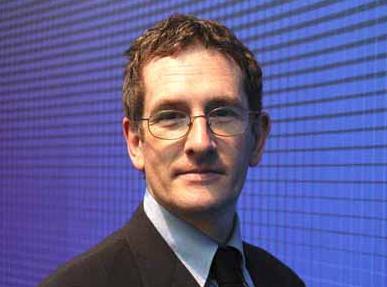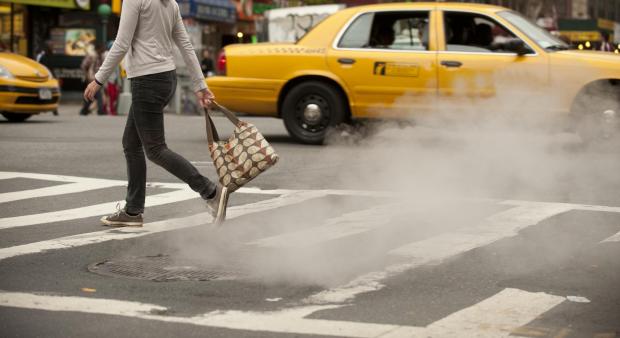Although it seems resolving the climate crisis may be an even more ambitious goal than landing on the moon, only a similar vision that unites both public and private bodies can make the human race achieve the impossible once again, reveals Andrew Collier
BACK in 1961, US President John F Kennedy made a speech to Congress that changed history. He famously set America the goal, before the end of the decade, of landing a man on the Moon and returning him safely to Earth.
“In a very real sense, it will not be one man going to the Moon”, he explained. “If we make this judgment affirmatively, it will be an entire nation. For all of us must work to put him there.”
Kennedy’s vision was, of course, realised in the Apollo 11 landing in 1969. More than 60 years on, there are strong parallels with humankind’s response to the climate emergency.
Both involve challenges of mind-boggling magnitude, requiring belief and huge effort in a common cause. Those challenges may initially seem impossible, but are not. And they can only happen if eloquent words – words we will hear at COP26 in Glasgow next month – are translated into hard action.
There is another lesson to be learned from Kennedy’s vision. He and his successors recognised that it could only be completed through a combination of policy setting by a public sector agency – NASA – working alongside companies in the private sector that would deliver the hardware and technical, scientific and engineering expertise required.
This same combination of public and private agents and talent may well be key to tackling the climate emergency. Professor Stuart Anderson, Director at the Scottish Informatics and Computing Science Alliance (SICSA) sees both the climate crisis and the Apollo programme as similar missions.
The drive to and beyond net zero, he thinks, needs to adopt the Kennedy-type model of being public sector led with private sector involvement.
“I don’t think you can get the quality of planning needed from companies because they’re set up for shareholder benefit”, he explains. “Some countries are much better than others at doing this sort of thing.”

He gives an example of Gothenburg in Sweden, where a community heat scheme has been installed. Some 90 per cent of homes in the city are connected to this. It is run by the local authority but takes its inputs from local incinerators, sewage plants, heat pumps and other renewable sources.
“People are entitled to heat”, he adds. “If you are going to get a just transition, you have to think about what people need.
“The planning of the infrastructure is done by the city of Gothenburg, but there’s a lot of entrepreneurial activity around meeting that need.”
He believes there is momentum around a just transition in Scotland, with the Scottish Government rising to the challenge of planning for this. However, he thinks this now needs to be stepped up. It is the public administrations in individual countries, he asserts, that will and should drive the required exchange of ideas.
“We have the overall challenge, which is getting to net zero. Actually, Europe should really be a net absorber of carbon – we produced it during the industrial revolution.
“If we did absorb it, then maybe other countries that are modernising should be able to produce a bit more CO2.”
He is also a strong believer in focusing on community empowerment and involvement in the net zero programme. This principle has been embedded in legislation in Scotland since 2015.
“This does help support communities doing things. We need something that is really just and operates at this level rather than at an individual one.
“For instance, I’m looking to decarbonise my house. Doing that will cost me between £20,000 and £30,000, so it’s never going to add up financially. However, if the village I lived in had a ground source heat pump supplying everyone with heat, it would make more sense. But I don’t see any way to organise that. At the moment, there are lots of little companies doing individual contracts with individual houses. So in a street, perhaps three houses will be decarbonising but the others can’t afford it.”
Municipalities need to be more powerful, he believes. “However, they have been shorn of money over many years.
“If they had the resources, they could be trying to empower communities more.
“I think that the Scottish Government does understand this – it does do things like empowering islands to buy themselves. So the ideas are there already, but you could do things like amplifying the effect by putting more oompfh into popularising things and getting them moving.”
One way of doing this would be to give more power to community councils, though he concedes that a national body would probably be needed to play a coordinating role.
It is the case that the Scottish Government has its eye on this, he adds, through bodies such as the Just Transition Commission. “The justice element is very important.
“We do have to start doing things at community level in terms of decarbonising heat and improving insulation. We have the gas crisis at the moment, and one way of insulating us from that is to reduce demand. We do that by changing the way we provide heat in a radical way.”
It is the EU and the US that are arguably best placed to drive forward movement globally. “I think culturally, Europe is closer to communal ways of working. In the United States, there is more of an individual ethos and there isn’t really a national grid that allows power sharing – it’s more of a state-by-state patchwork.”
Does Professor Anderson believe that COP26, starting next month in Glasgow, will make a difference? “I think that there has to be a sense of urgency and that has to be transmitted to the individual nations. And the Global North, if you like, has to be seen to lead. But I’m optimistic.
“There is a lot of work going on around having much, much better ways of producing power and much, much better ways of using it. There is innovation happening around use of energy right now within individual companies and in research labs. So there is a better understanding of the overall system.
“There needs to be a coherent national level plan that draws on community activism so that a just transition can happen. That will mean that people’s needs are being met. It probably involves more state spending, but jobs will come from it too.”
———————————————
Big Apple-style heating system is bearing fruit in Clydebank
IT is one of most evocative and visually compelling features of Manhattan: the atmospheric vista, documented in hundreds of movies, of steam rising from the streets and billowing into the air.
It is, in fact, one of the world’s oldest and most comprehensive community heating systems. Dating back to 1882, the New York City steam network is the latest commercial infrastructure of its type anywhere,with 12 million tonnes of steam flowing through the network and heating and cooling buildings every year.

The system, which is also used to provide humidity to museums and even to clean restaurant dishes, is more sustainable than natural gas, though not without its problems.
There have been several explosions over the years, and on occasion they have been fatal.
The same basic principle of district heating is being applied in a more modern way in Clydebank through a new energy development. The first large scale water source heat pump project of its type in Scotland, it is now operational.
The £20 million project is owned, operated and maintained by West Dunbartonshire Council. It works by taking water from the Clyde to generate heat for buildings on the iconic site of the former John Brown shipyard, now called Queens Quay.
Construction has involved the laying of five kilometres of pipe. Buildings being supplied from the new network in the initial phase include Clydebank Leisure Centre and the Titan Enterprise Centre. It will have scope in the future to heat the Golden Jubilee Hospital, Clyde Shopping Centre and the heart of the town itself.
An energy centre houses sustainable and renewable technologies to heat the water, avoiding the need for individual boilers inside each building. A control and management system operates and monitors the network and the heated water is transported through pipes that are thermally insulated.
Each connected property has a Hydraulic Interface Unit (HIU) that is similar in size and appearance to a traditional boiler. Heating and hot water can be switched on as and when required and the amount of energy consumed can be accurately monitored, helping the billing process.
As district heating systems are more cost effective than traditional gas boilers, residents using the network will be offered a reduced tariff. The worry about servicing and the cost of potential repairs is taken away. The system is also more reliable than conventional gas heating.
Another advantage is that as a sustainable alternative, the system will make a major contribution to West Dunbartonshire Council’s climate change target of reducing carbon emissions by 15 per cent over the next few years.
Councillor Iain McLaren, the local authority’s Convener of Infrastructure, Regeneration and Economic Development, says that using district heating will remove more than 41,000 tonnes of CO2 from the environment annually for the next 40 years.
“I am proud that West Dunbartonshire is leading the way in using this natural resource to provide energy”, he adds.
“This system will have a hugely positive impact on Clydebank and West Dunbartonshire as a whole, allowing the council to take steps to address fuel poverty among tenants and residents by offering reduced tariffs.”
————————————–
Take part in CENSIS event
ON Tuesday, October 26 key figures from more than 20 different organisations will be taking part in a special one day, online conference, hosted by The Herald, which will explore the potential of a net zero carbon transition to create a healthier, wealthier and more equal society.
As part of ‘Scotland’s Contribution to COP26: a joined-up Just Transition’, speakers from science, technology, government and other sectors will examine not only the speed and scale at which Scotland must move if it is to tackle the climate emergency, but also to spell how how important it is that, as society reshapes to meet the challenge, that absolutrly no-one is left behind.
This free, one-day conference will look at important just transition themes such as skills, circular economy, empowering young people, improving health outcomes and delivering sustainable economic growth to the Scottish economy.
Visit newsquestscotlandevents.com/events/cop26-just-transition/

